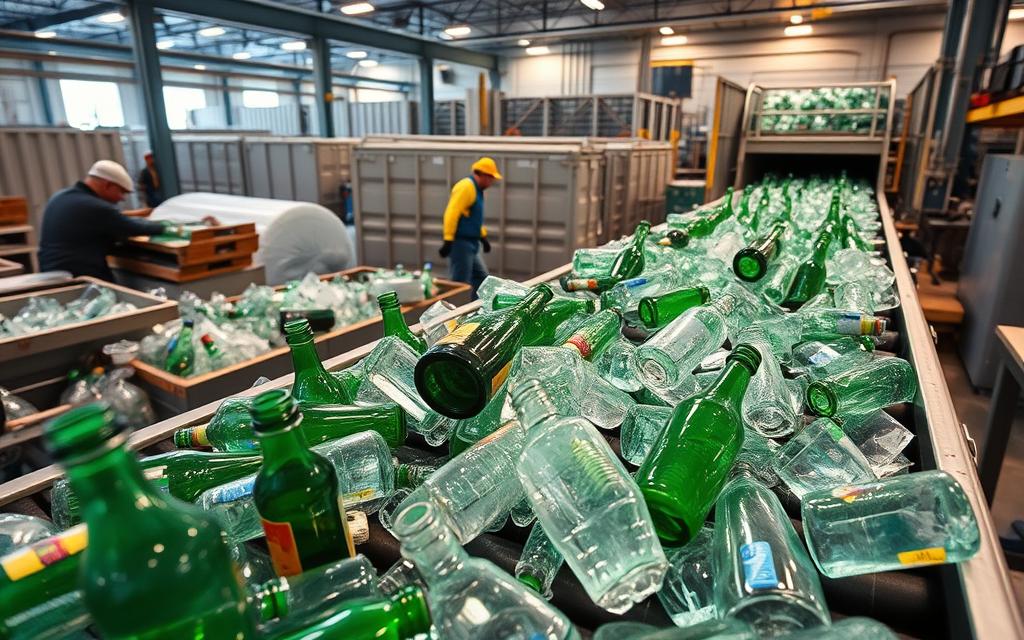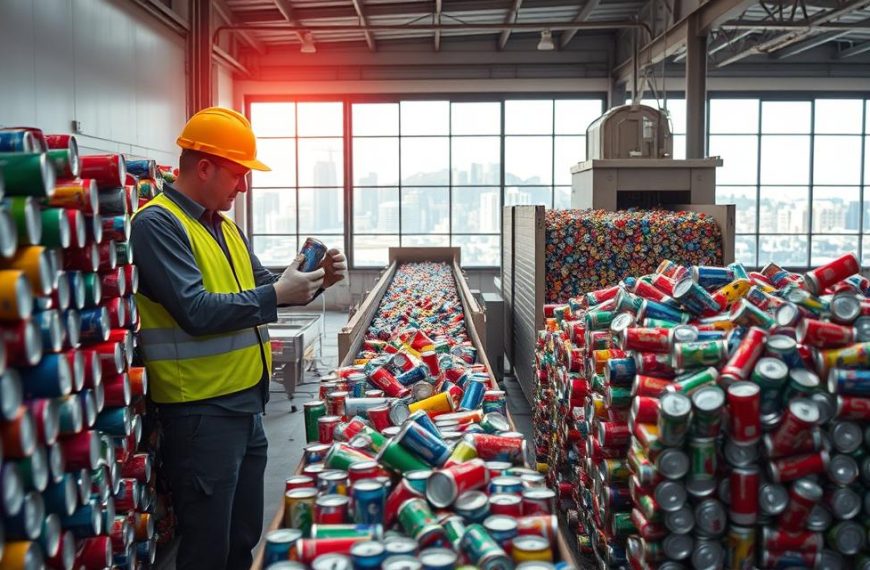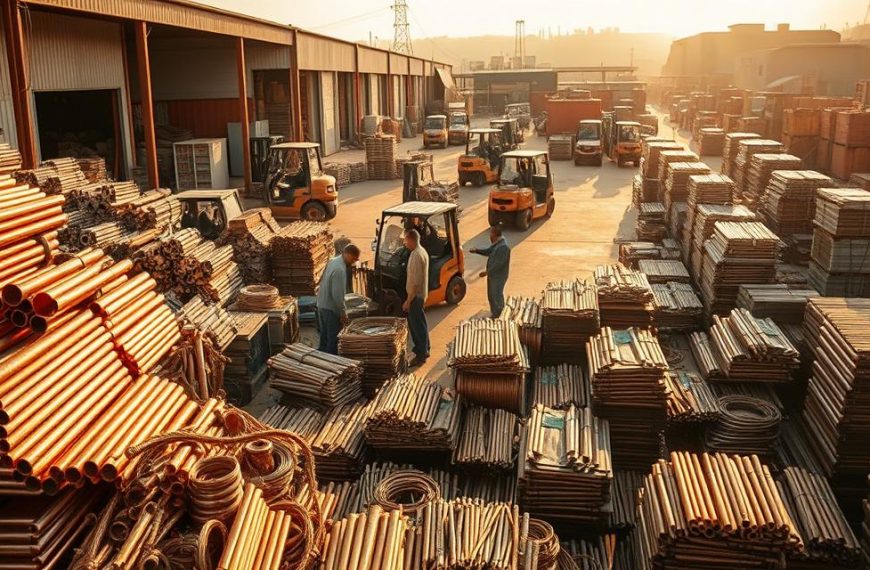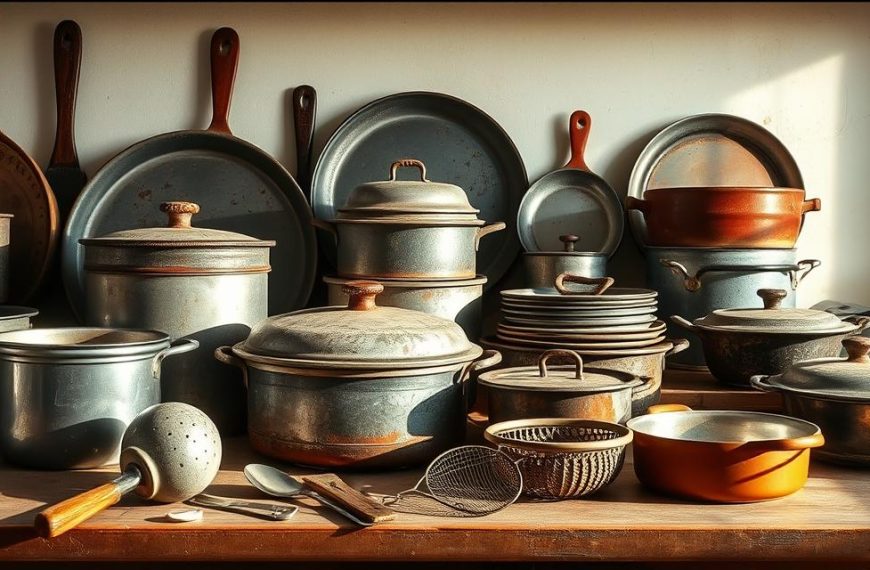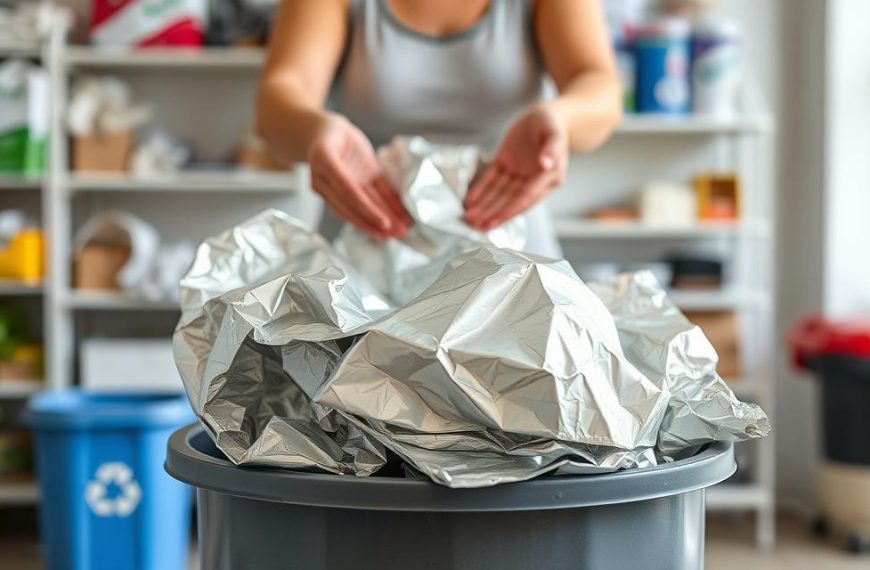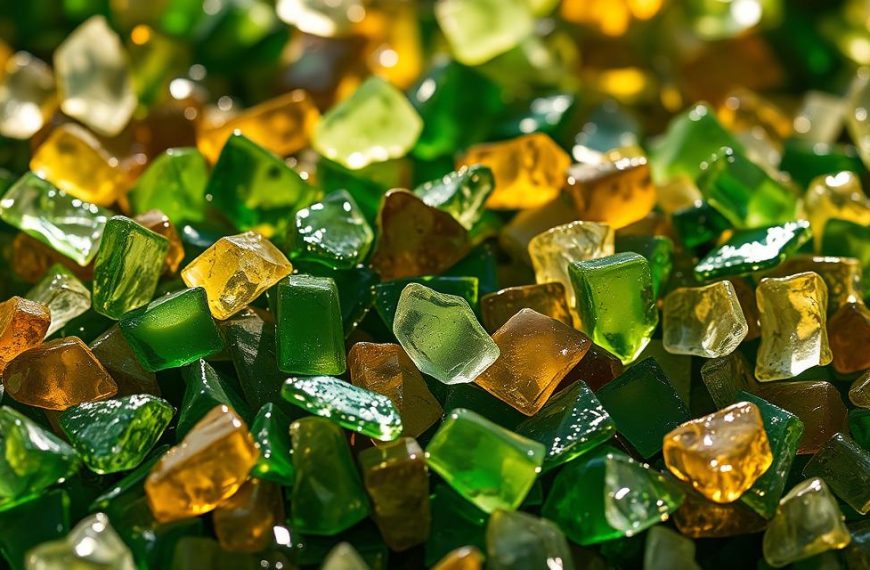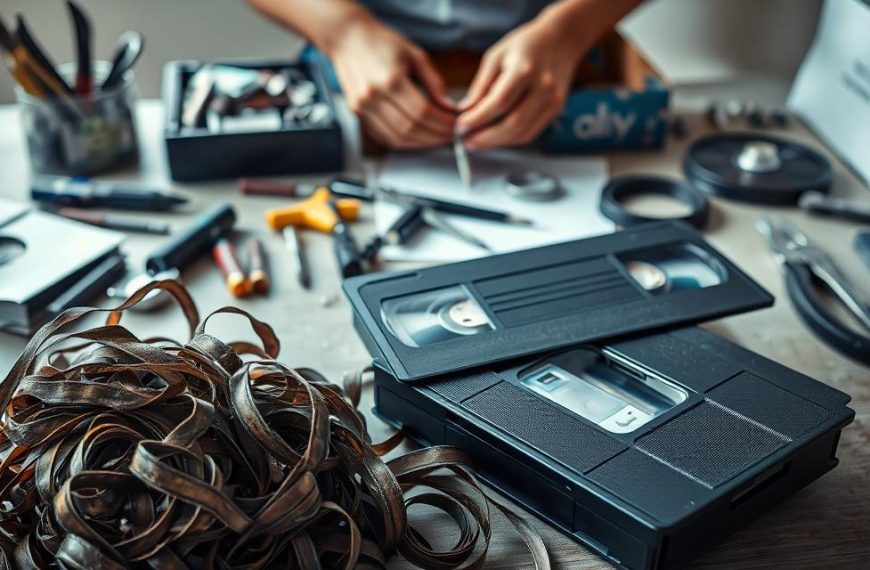Many people wonder about the proper way to dispose of glass. This material can be reused endlessly, making it a valuable resource. However, not all glass items belong in the recycling bin.
Items like mirrors, windows, and broken pieces often require special handling. These exceptions can confuse homeowners trying to make eco-friendly choices.
Recycling glass saves energy and reduces waste. It also helps conserve raw materials. Yet, the rules vary depending on where you live. Some areas have curbside programs, while others require drop-off locations.
Understanding the differences between recyclable and non-recyclable types is key. This guide will explore the basics of glass disposal, curbside rules, and the environmental benefits of proper recycling.
Understanding Glass Recycling: Is Glass Recycle or Garbage?
Properly handling glass requires understanding its unique properties. This material can be reused endlessly without losing quality, making it a valuable resource for recycling programs. However, not all types are suitable for curbside pickup or processing at facilities.
What Makes Glass Recyclable?
Silica sand, a primary ingredient in glassmaking, allows this material to be melted and reshaped repeatedly. This process conserves raw materials and reduces energy consumption. Container glass, such as bottles and jars, is the most commonly accepted type in recycling programs.
Here’s a quick comparison of recyclable and non-recyclable glass types:
| Recyclable Glass | Non-Recyclable Glass |
|---|---|
| Bottles | Windows |
| Jars | Mirrors |
| Jugs | Light Bulbs |
Common Misconceptions About Glass Recycling
Many believe all glass can be processed, but items like windows and mirrors often contain coatings or mixed materials that complicate recycling. Broken pieces, while recyclable in theory, pose safety risks at facilities.
Contamination is another issue. Food residue on containers can reduce their recyclability. Mixed materials, such as metal lids, also create challenges during sorting. For more facts about glass recycling, visit this resource.
By understanding these nuances, you can make informed decisions about glass disposal and contribute to a more sustainable future.
Types of Glass and Their Recyclability
Not all glass items are created equal when it comes to disposal. Each type has specific rules for handling, making it essential to know the differences. Proper sorting ensures materials are reused effectively or disposed of safely.
Container Glass: Bottles, Jars, and Jugs
Container glass, such as soda bottles and pasta jars, is widely recyclable. These items must be empty and rinsed before curbside pickup. Here’s a quick list of acceptable container glass:
- Soda bottles
- Pasta jars
- Food jugs
Tempered glass, often found in drinking glasses, is incompatible with recycling streams due to its chemical composition. Always check local guidelines for specific requirements.
Non-Recyclable Glass: Windows, Mirrors, and Light Bulbs
Certain glass products cannot be processed through standard recycling programs. Window glass, for example, may be repurposed in industrial applications like asphalt. Mirrors, with their reflective coatings, require special handling.
CFL light bulbs contain hazardous materials and must be taken to household hazardous waste (HHW) facilities. Broken pieces of any type should be handled carefully to avoid injury.
By understanding these distinctions, you can make informed decisions about glass disposal and contribute to a more sustainable future.
How to Properly Recycle Glass in the US
Recycling glass correctly in the US involves understanding local rules and processes. Each area has specific guidelines for curbside programs and drop-off locations. Following these ensures materials are processed efficiently.
Curbside Recycling Programs
Most US cities offer curbside pickup for recyclables, including glass. These programs often run biweekly, matching the garbage collection schedule. Residents receive a designated recycling bin for their items.
Check local guidelines for bin specifications and acceptable materials. Prohibited items include bagged recyclables and tanglers like cords. These can disrupt the sorting process at facilities.
Preparing Glass for Recycling: Cleaning and Sorting
Before placing glass in the recycling bin, ensure it’s empty and clean. Rinse containers thoroughly to remove food residue. Remove labels and lids, as they can interfere with sorting.
Broken container glass should be wrapped securely to prevent injuries. Avoid using plastic bags for recyclables, as they are not accepted in most programs. Proper preparation ensures materials are processed effectively.
For specific disposal queries, use your municipality’s online tool. This resource provides up-to-date information on local collection rules and acceptable materials.
The Environmental Benefits of Recycling Glass
Recycling glass offers significant environmental advantages that go beyond waste reduction. This process conserves resources, reduces energy consumption, and supports sustainable manufacturing practices. By understanding these benefits, individuals can make informed decisions that positively impact the planet.
Energy Savings and Reduced Waste
Using recycled glass in production saves energy. It melts at lower temperatures compared to raw materials, reducing energy consumption by 2-3% for every 10% of cullet used. This efficiency lowers greenhouse gas emissions and supports cleaner air.
Additionally, recycling minimizes landfill waste. When reused, glass reduces landfill space by 100%. This helps preserve natural landscapes and reduces the environmental costs of mining virgin materials.
“Recycling glass reduces related air pollution by 20% and water pollution by 50%.”
How Recycled Glass is Used in Manufacturing
Recycled glass finds new life in various products. It’s commonly used in fiberglass insulation, new containers, and even road construction. This closed-loop system ensures materials are reused efficiently.
Many manufacturing facilities incorporate recycled glass into their processes. For example, bottle plants often use it to create new containers, reducing the need for raw materials. This practice contributes to LEED certification, promoting sustainable building standards.
For more insights on recycling glass, visit this resource.
Conclusion: Making the Right Choice for Glass Disposal
Choosing the right disposal method for glass ensures sustainability and efficiency. Always verify local recycling programs to understand specific rules. This step prevents waste and ensures materials are processed correctly.
Consider the type and condition of the item before disposal. Many facilities accept certain forms but not others. Reuse options should always come first, reducing the need for collection or processing.
Participate actively in municipal initiatives to support your community. Use tools like the Recycle Coach app for guidance. For items requiring special handling, contact household hazardous waste centers.
By following these steps, you contribute to a cleaner, more sustainable future. Make informed choices and encourage others to do the same.
